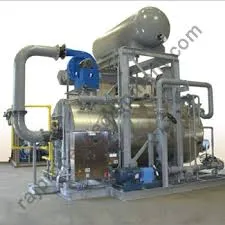Overview of Steam Boiler Systems and Their Applications in Industrial Settings
The Steam Boiler System An Essential Element in Industrial Operations
Steam boiler systems are indispensable components of various industrial operations, providing steam for heating, power generation, and numerous manufacturing processes. As a critical asset, steam boilers play a vital role in enhancing efficiency and output in sectors such as energy, food and beverage, pharmaceuticals, and manufacturing. Understanding the fundamental principles, types, and operational safety measures of steam boiler systems is key in optimizing their functionality.
Fundamental Principles of Steam Boiler Systems
At its core, a steam boiler is designed to convert water into steam through the application of heat. This heat is generated by burning fuel, such as natural gas, oil, coal, or through electric resistance. The resultant steam is then distributed throughout a facility to perform specific work, such as driving turbines for electricity generation, providing heat for residential and commercial spaces, or supporting various manufacturing processes.
The basic principle of a steam boiler system involves heat transfer and efficiency. Inside the boiler, water is heated, and as the temperature rises, it converts into steam. The efficiency of this conversion process is crucial—high-efficiency boilers can significantly reduce fuel costs and environmental impact. This leads to a growing emphasis on the development and utilization of advanced boiler technologies to enhance performance and sustainability.
Types of Steam Boilers
Steam boilers can be categorized into several types based on their design and fuel source. The two primary categories are fire-tube and water-tube boilers.
1. Fire-Tube Boilers In fire-tube boilers, hot gases produced from combustion pass through tubes that are submerged in water. The heat is transferred from the gas to the water, creating steam. These boilers are typically simpler in design, making them easier to operate and maintain. However, they are usually limited to lower pressure applications.
2. Water-Tube Boilers These boilers, on the other hand, contain water-filled tubes that are heated by combustion gases outside the tubes. Water-tube boilers can generate steam at higher pressures and temperatures, making them suitable for large-scale industrial applications. They require a more complex design and rigorous maintenance due to the higher pressures involved.
Additionally, boilers can be classified based on their fuel source. Fossil fuel boilers burn natural gas, oil, or coal, while biomass boilers utilize organic materials. Electric boilers are another type, offering a cleaner alternative by using electricity to generate steam.
steam boiler system

Safety Measures in Steam Boiler Operations
Safety is a paramount concern in steam boiler operations. The high pressures and temperatures involved can lead to hazardous situations if not managed correctly. Several safety measures and practices are essential to mitigate risks
- Regular Inspections Implementing a routine inspection schedule ensures that boilers are functioning correctly and safely. Inspections help identify wear and tear, leaks, and other potential issues before they lead to failures.
- Pressure Relief Valves These devices are critical for preventing over-pressurization within the boiler. They automatically release steam when pressure exceeds safe limits, protecting both the boiler and associated equipment.
- Water Quality Management The quality of water used in a steam boiler directly impacts its efficiency and longevity. Monitoring and treating water to prevent scale buildup and corrosion is vital for optimal performance.
- Training and Compliance Operators must undergo proper training to understand the boiler system's intricacies. Adherence to local and national safety regulations is essential to ensure legal compliance and safety.
Conclusion
The steam boiler system is an integral part of many industrial processes, serving as a reliable source of steam for various applications. Understanding the fundamental principles, types, and safety measures related to steam boilers not only enhances operational efficiency but also ensures the safety of personnel and equipment. As industries continue to prioritize sustainability, advancements in boiler technology and the exploration of alternative energy sources will play a significant role in the future of steam generation.
In conclusion, the steam boiler system's efficiency, versatility, and importance in industrial settings cannot be overstated. With ongoing innovations and a focus on safety, steam boilers will remain a cornerstone of industrial operations for years to come.
-
Top Industrial Boiler Contractors Supplier & Factory Quality Products & ServicesNewsJun.10,2025
-
Panasonic Hot Water Boiler - Reliable & Energy Efficient Heating SolutionNewsJun.10,2025
-
Pennco Steam Boilers High-Efficiency & Durable SolutionsNewsJun.10,2025
-
Industrial Boiler & Mechanical Solutions Efficient Industrial Heating SystemsNewsJun.10,2025
-
Panasonic Hot Water Boiler - Energy-Efficient, Reliable Heat SolutionNewsJun.10,2025
-
Premium Power Plant Steam Boilers High Efficiency & ReliabilityNewsJun.09,2025

